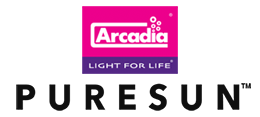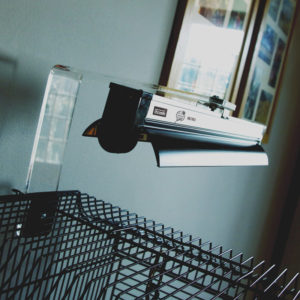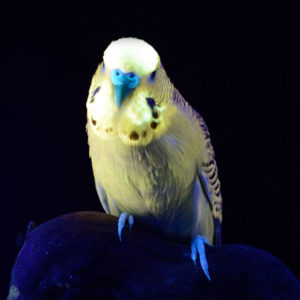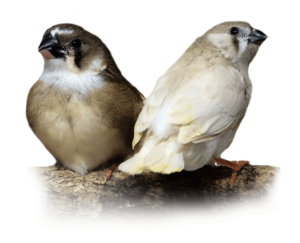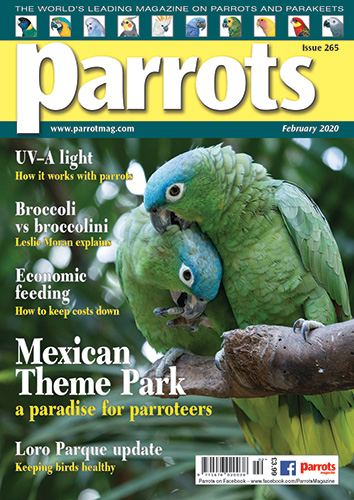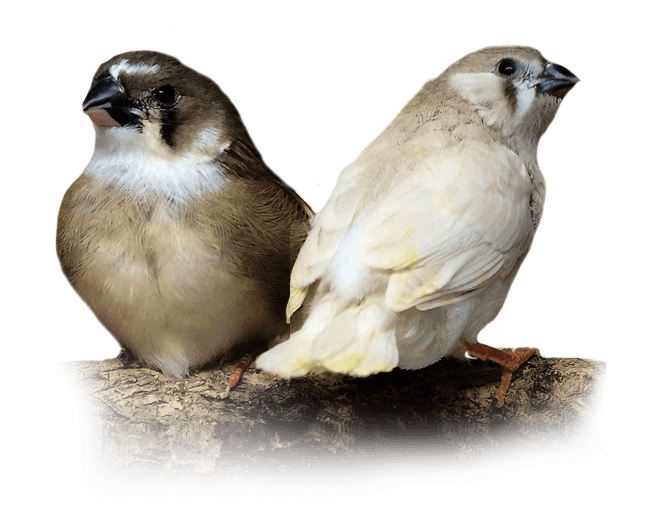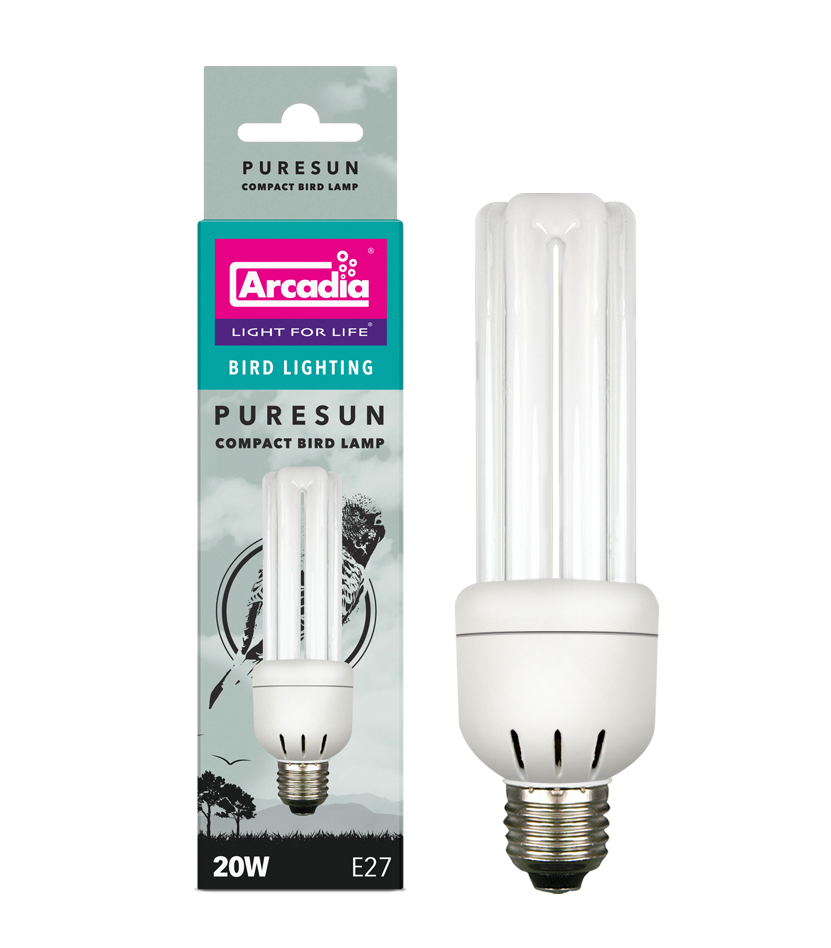
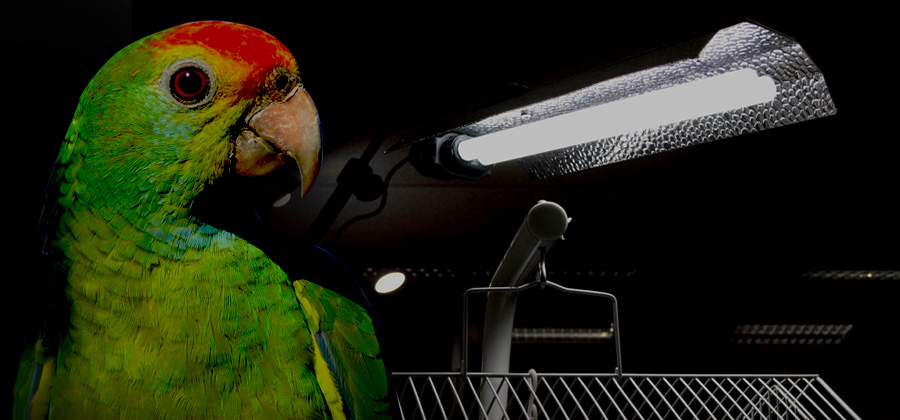
Part 2
What is light and why it so important?
Part 2 / Issue 265
Parrot Magazine / February 2020
What is light and why it so important?
In this second part of John Courteney-Smith’s article on light, he considers UV lamps, health, wellbeing and reproduction
The first point I will make here is within a descriptive commonly used for ‘artificial daylight’ lighting. Sadly, there remains some confusion within the term ‘full-spectrum’. The term full-spectrum is commonly used to denote the emission of a lamp that includes the ‘full-spectrum’ of visible light from 400-700nm and within the wide tolerance used to describe a colour of daylight (Kelvin scale). This can be from 4200-7000 Kelvin or even in cases, 8k kelvin (warm to cool light).
The problem here is, that the term full-spectrum is used to describe all light sources and colours within the accepted colours of daylight. There is no accepted standard to be worked within in order to ensure that a lamp does indeed include the spectrum of natural daylight. Therefore, lamps are liable to be labelled full-spectrum even though they may not be. Indeed, a lamp’s output or ‘spectrum’ can be manipulated by lighting scientists to show quite different curves within the lamp’s spectrum away from that of natural daylight.
Currently it is impossible to accurately mimic the spectrum of the sun in a single lamp, we simply are not able to harness or replicate its true spectral curve yet. What we must do is to use good science to ensure that the spectrum of a lamp mimics that of daylight as closely as possible.
This is still not yet possible in the visible part of the spectrum, however quality lamps that produce UV do so now very accurately. Within this, we can now be sure, that high quality lamps are balanced within the UV portion, project a quantity of UV that can be measured within the international unit of measure ‘UV Index’ and will have a positive impact on the biological cycles that are impacted by UV, especially the D3 cycle.
The mislabelling of lamps can have a negative impact on those that seek to use specialist bird lighting as there remains a level of confusion. I have seen sellers at large bird shows selling photographic fluorescent tubes and even LEDs as being full-spectrum, the truth is that they may produce a colour of light similar to daylight, but they do not always contain the balance of spectrum required for avian vision, nor are they able to produce UV, which is especially the case with LED.
It is UV provided in natural balance within both terrestrial UV-A and UV-B that allows birds to see in full colour and to then be able to go on to manufacture their own Vitamin D3. In this way, these ‘standard’ lamps, be they fluorescent or LED have no positive impact on the biological function of birds, other than by helping to set a natural circadian rhythm. Indeed, if a lamp does not clearly display the ‘UV’ logo within the triangle etched into the lamps glass or the base of the lamp as is stated by law, then it does not produce the correct balance of terrestrial UV and should be avoided.
We should be looking for the advertised term of ‘full-spectrum’, then checking for the UV symbol, then making sure that the colour of the lamp falls within that of natural daylight (Kelvin) whilst also looking for the ‘Colour Rendering Index’ or ‘CRI’. CRI is a useful unit of measure within bird lighting, as it is a simple scale from 0-100 used to measure how similar an object appears under the lamp to the same object perceived under natural daylight. The higher the CRI, the more ‘natural’ the object (bird) will appear. Full-Spectrum+UV-B lamps should have a CRI of over 90. The latest lamps are around 95. We then need to check the lamps ability to project the desired quantity of UV at distance (UVI).
Specialist bird lamps
Specialist bird lamps in standard output T8, High Output T5, Standard output T5, E27 Compact fluorescent and T5 power compact are different from standard lamps labelled as full-spectrum or ‘daylight’. Indeed, these lamps include specially selected and rare phosphors that not only try to mimic the spectrum of visible terrestrial daylight and within the accepted colours of daylight, but they also include wavelengths within ultra violet or ‘UV’. The lamps are marked with the ‘UV’ logo and the spectrum is printed on the box showing an emission between 290-400nm.
How does a fluorescent lamp work?
Fluorescent lamps have been available for a long time, starting off as being an inch and half in diameter or ‘T12’, then more commonly one inch ‘T8’. Over the past 15 years or so there has been a further development in fluorescent lighting, that being the invention of HO-T5 lamps (High Output). These slightly thinner lamps use a high output, high frequency signal to start and run the lamp. Specially developed phosphors are then energised in a way that allows them to produce near twice the quantity of light than standard output T8/T5 lamps per watt, and they are flicker free. As more light is produced as a total emission, so is UV, but in a stable and balanced way. This increases our ability to provide a measured dose of energy at increasing distance.
A lamp is quite a simple invention, but contains some very clever chemistry and relies upon complex physics. The glass part of a lamp is called the ‘envelope’. The two opposing metal ends complete with the power pins are the ‘caps’. The envelope is coated internally with a thin layer of phosphor paint. It is the type of phosphor and the individual mix that produces the final ‘colour’ or lamp emission. The lamp has electrodes at each end, these are heaters, placed inside of the tube in order to become hot enough to vaporise a tiny piece of mercury in the lamp. The tube is also filled with one of the noble gases, namely Argon.
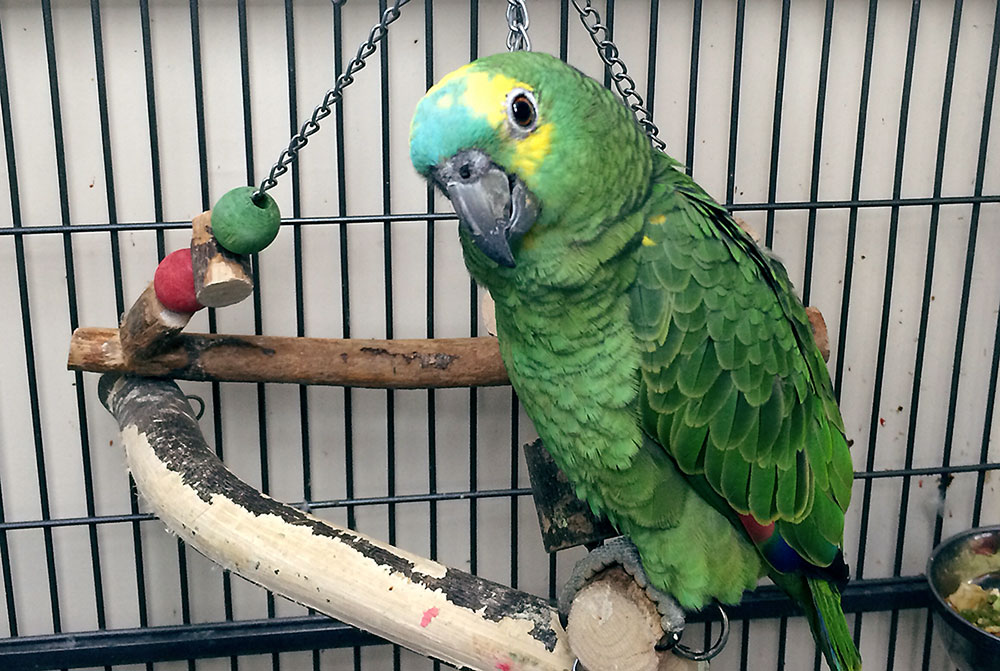
Electrons cannot flow from one end of the lamp to the other in air, only in one of the noble gases. As the electrodes heat, they vaporise the mercury. This causes electron flow through the lamp from one end to the other repeatedly and incredibly quickly. When mercury is vaporised in argon as a ‘flow’, it produces pure and very destructive UV-C. This sounds shocking as UV-C is so dangerous, but it is UV-C that phosphors react to, causing them to produce light. As such, the energy within UV-C is absorbed by the phosphors and the special glass of the lamp so that it is blocked. What remains is the output of the lamp, as required by the person who designed it.
Specialist lamps used for birds and reptiles use a blend of phosphors that produce light within the visible spectrum that mimics the curves of the sun, but they also produce UV-A and UV-B at whatever percentage the inventor required.
So, why should we provide UV to captive animals? In simple terms, the sun provides this energy to us at all illuminated times, therefore is it used in life. This is over simplifying of course, so let’s look at UV-A.
UV-A (320-400nm) has a direct impact on life. The most widely known is within the ‘activation’ of tetrachromatic vision. Birds, Reptiles and some fish are known to have developed an additional ocular cell that simply allows them to see or perceive a very large number of colours and reflectance. It is often said that a human being with trichromatic vision can see approximately one million colours, while species with tetrachromatic vision can see around 100 million colours. The subject then becomes quite convoluted as it seems that every species has further adaptations to the eye and is able to see in a slightly differing way to another species. So, we know almost all birds use UV-A to view the world, but not all birds see in exactly the same way.
How does this help them? being able to see a different world to that of the human allows birds to thrive. It is possible even that they use this extended visual capacity within migration and food finding. Indeed, there are published papers that show that certain fruits, insects etc. are indeed ‘fluorescing’ to the tetrachromat when exposed to UV-A. Being able to see ‘glowing’ foods, even when hidden in foliage is a real boon for the bird as they are able to visualise the correct food and then fly directly to it in the most efficient way.
As keepers, we are all too aware that many species are monomorphic (both sexes look alike) to the human keeper. This would be madness to the wild animal, as it would be near impossible to efficiently find and impress a mate. Yes, sexually alike species are not at all alike to the tetrachromat. We now see how the feathers, legs and beak seem to fluoresce or glow even to the human if enough UV-A is placed over the bird.
UV-A allows birds to both find food and water, but it also allows them to find other same species groups and of course, a mate. Indeed, we even think that feather health plays a role in mate selection, where birds are healthy and reproductively ready the feathers will be in-tact and healthy. Birds that are out of condition or sick will have poor feathering. As such and given the power of super-natural sight, the hens are able to choose the cock bird that is more likely to provide her with successful young. It is also now thought that some species use the oil of the preening gland (uropygial gland) to adorn the feathers and beak. This would be visible to the adapted eye and could be an attractant in two main ways. First, the ‘art’ of the decoration itself and secondly, some feel that ‘quality’ of the preening oil is higher in fitter birds and would be more reactive to UV.
Certainly, most birds will use the preening gland on a regular basis, so this makes sense to me. It is also worth noting that the oil produced by the uropygial gland contains precursors of vitamins D3. These precursors are ‘activated’ through exposure to terrestrial UV and turned to an ingestible form of vitamin D3. As such, birds could therefore be self-supplementing by using the oils secreted by this gland as the oil enters the beak and is anointed onto the feathers, it is only reasonable to suggest that a percentage is ingested.
For those who find it hard to Photo: Adam Hough accept that birds have enough bare skin or daylight to have any impact upon, being almost covered in feathers, we see here an overriding argument for the correct use of lighting that contains UV. Even if certain factions only accept that the preening gland is responding to UV and that the change from a precursor to D3 occurs alongside exposure to terrestrial UV. Of course, those of us who understand nature and the synergy of supply, will accept that even with tiny percentages of skin being exposed to UV that this will have an impact on the health of a bird. UV-A also helps to regulate D3 production.
It would appear that some birds may even have a higher requirement for access to the full spectrum of daylight. This is shown within the long term natural development of the species, its habitat, habits and even it feathering. If we look at the African Grey and the Macaw, we see birds with large areas of the face being bare or almost bare. The same can be said for species with bare skin around the eyes and face and head.
Even the production of high colouration in birds, especially those that have orange or red feathers, is linked to the provision of terrestrial daylight. These species must consume the full-spectrum of carotenoids and be exposed to unfiltered daylight for these colours to develop properly. Look at the Strawberry Finch, which will revert to being almost black if kept out of access to UV. These are the intricate cycles and processes that are linked to the ingested diet and the energy that surrounds. It may not be exactly the same process in some parrots with red feathering, but for sure these principles have a baring on avian life as a whole.
One of the reasons why certain species have been so hard to cage breed over the years is almost certainly linked to the improper provision of light. Without access to the right quantity of UV-A, how can we expect good mate selection in monomorphic species to occur easily. Furthermore, even certain chicks are known to ‘gape’ to be fed with UV reflecting coloured markers, even this most basic of needs requires a level of UV-A to be seen by the parent.
Have these species been bred in the past without specialist lighting? Yes, but this was rarer than it should have been, suggesting that the pull of nature to reproduce is a far stronger force than any level of inaccurate care. If we supply energy in the correct way, allowing them to make good mate choices, leading to reproductive display and eventual feeding, surly our breeding attempts will be more fruitful.
Look at breeding collections of exotic birds maintained outside in warm climates, the results seen in Tenerife are outstanding and over a plethora of species. This is even proven in poultry farming where those supplied with terrestrial UV lay better eggs, more often and for longer. Birds that have access to the correct quantity and balance of UV-A, and being able to see naturally, are also less likely to be unnaturally stressed.
This was more of an issue in the old days of wild harvest, but certainly a similar outcome must be quite troublesome for those birds kept outside for any length of time with access to ‘full-colour’ and then bought back inside, away from UV and outside of the remit of natural vision. Stress has a negative effect upon every cycle and process within the body. Stress hormones are there to allow an animal to remove itself from danger quickly. However, long-term exposure is detrimental.
An over production of Cortisol over time will have a negative impact on the birds microbiota, upsetting digestion and impacting the very powerhouse of the bird, that being the immune system. Cortisol when present over time can also negatively impact on vital organs.
I see two defined examples of potential stressors for birds not provided with the correct access to balanced UV. One is as we have discussed in regard to the removal of natural vision. The second is due to the biological imbalances that can occur in birds due to a critical lack of usable Vitamin D3 serum in the blood. We call this hypovitaminosis-D, which has a direct impact in the later stages on brain and nerve function and also dare I say, mental health.
What about windows, can placing a bird by a window be positive? Most Glass is a total UV stop, this is why you do not get a tan when sitting in the sun in your lounge or driving. Windows allow through some infra-red, but no UV unless special ‘low iron’ glass is used. As such, placing a bird near a window, and unless that window is open onto the bird can have no positive impact other than providing a day/night cycle and some mental stimulation.
This of course, could form part of positive mental stimuli. However, as glass lets IR through, it does pose a higher risk of quickly overheating the bird. It is with full ‘unfiltered’ exposure to daylight or by using specialist lamps correctly, that we afford the biggest positive impact on captive birds. This is not magic, a sci-fi force, holistic hokum or pseudoscience, this is the core principle of ‘energy in, equals in full, the level of energy available to be used and/or displayed’.
The same principles apply for all life in some way. We even feel it ourselves whilst sitting in the sun, other than the frustration of unnatural ‘boom and bust’ sunbathing leading to burn, even we feel better in ourselves after a day outside. This is no mystery! This is the quick action of the production and use in the body of Vitamin D3, or as it is called in the media ‘The sunshine’ Vitamin.
In the next part, we will look at UV-B, its vital importance to life, how D3 is made and regulated and we will look a little more at the types of lamps used to create sunlight with UV.
Thank you to Parrot Magazine for publishing our article.
